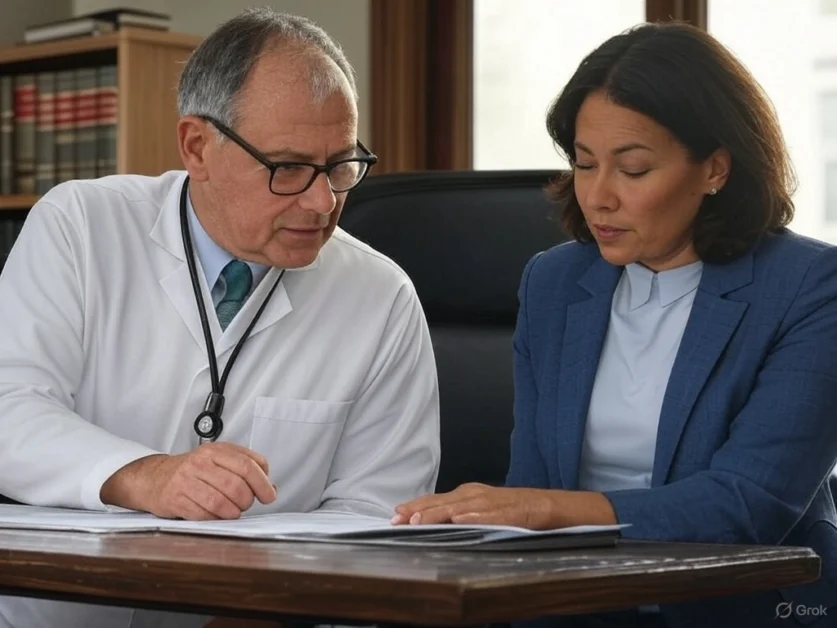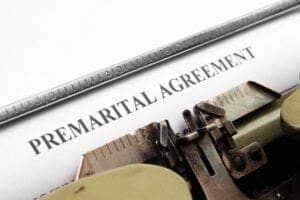The Role of Medical Records in Personal Injury Claims
Medical records serve as the foundation of successful personal injury claims, providing critical documentation that can make the difference between adequate compensation and an insufficient settlement. These documents establish a clear timeline of injuries, treatments, and recovery progress that proves the connection between an incident and the resulting harm. Understanding how to properly obtain, organize, and present these records is essential for anyone seeking fair compensation after suffering injuries due to another’s negligence.
The legal landscape for personal injury cases continues to evolve, with recent developments in 2025 affecting how medical documentation is handled, shared, and evaluated. Insurance companies now employ more sophisticated methods to analyze medical evidence, making comprehensive and accurate records more important than ever. This article examines the crucial role medical records play in personal injury litigation and provides guidance on maximizing their effectiveness in securing just compensation.
The Foundation of Personal Injury Cases
Personal injury law centers on the principle that when one party’s negligence causes harm to another, the injured party deserves compensation. Medical records provide the objective evidence necessary to establish this connection between negligence and injury. Without proper documentation, claims often fail regardless of their merit.
These records serve multiple critical functions in personal injury cases. First, they establish the existence and extent of injuries through diagnostic reports, physician notes, and treatment plans. Second, they create a timeline that connects the injuries directly to the incident in question. Third, they document the progression of recovery, including any permanent disabilities or ongoing medical needs. Finally, they provide the financial basis for calculating damages through detailed billing statements.
The courts and insurance companies rely heavily on medical documentation when evaluating claims. Judges and juries typically view medical records as highly credible evidence because they are created by neutral healthcare professionals with specialized expertise. Similarly, insurance adjusters base their settlement offers largely on the strength and completeness of the medical evidence presented. This makes obtaining thorough and accurate records a top priority for anyone pursuing a personal injury claim.
Types of Medical Records Essential for Claims
Various types of medical documentation play different roles in supporting personal injury cases. Understanding these different records helps ensure that all necessary evidence is collected and properly presented.
Emergency room records often serve as the first and most critical documentation in injury cases. These records establish the immediate connection between the incident and the resulting injuries. They typically include triage notes, physician examinations, diagnostic test results, and treatment provided. The timing of these records is particularly important, as treatment sought immediately after an incident strongly supports causation.
Diagnostic imaging results provide objective evidence of injuries that might otherwise be difficult to prove. X-rays, MRIs, CT scans, and ultrasounds create visual documentation of fractures, soft tissue damage, internal bleeding, and other injuries. These images, along with the radiologist’s interpretation, can be powerful evidence of the nature and extent of injuries.
Treatment records from all healthcare providers document the ongoing care required for injuries. These include records from primary care physicians, specialists, physical therapists, chiropractors, and mental health professionals. Comprehensive treatment records demonstrate the full scope of medical intervention needed and support claims for both past and future medical expenses.
Medication records detail the pharmaceuticals prescribed to manage pain, prevent infection, or address other aspects of injury. These records support claims for both the financial cost of medications and the pain and suffering that necessitated them. Prescription records can be particularly important in cases involving long-term pain management or psychological effects.
Rehabilitation documentation shows the efforts made to recover from injuries and return to normal functioning. Physical therapy notes, occupational therapy records, and other rehabilitation documentation demonstrate both the severity of injuries and the diligence of the injured party in pursuing recovery.
Mental health records may be relevant when injuries cause psychological trauma such as anxiety, depression, or post-traumatic stress disorder. While these records require special handling due to privacy concerns, they can be crucial in establishing the full impact of injuries on quality of life.
Establishing Causation Through Medical Evidence
One of the most challenging aspects of personal injury cases is proving that the defendant’s actions directly caused the plaintiff’s injuries. Medical causation must be established through clear documentation that connects the incident to the specific injuries claimed.
The timing of initial medical treatment plays a crucial role in establishing causation. Records showing that treatment was sought immediately or shortly after the incident create a strong presumption that the injuries resulted from that event. Conversely, delays in seeking treatment can weaken causation arguments, as defendants may claim that injuries occurred during the intervening period.
Physician notes often contain specific statements about the likely cause of injuries based on the patient’s account of the incident and the nature of the injuries observed. These professional opinions carry significant weight in establishing causation, particularly when the physician has expertise relevant to the specific type of injury.
Pre-existing conditions often complicate causation arguments, as defendants frequently claim that symptoms existed before the incident. Complete medical records from before and after the incident are essential to distinguish between pre-existing conditions and new injuries. In many cases, medical records can demonstrate that while a condition may have existed previously, it was significantly aggravated by the incident in question.
The consistency of symptoms reported across multiple healthcare providers strengthens causation arguments. When records from emergency rooms, primary care physicians, specialists, and therapists all document similar symptoms beginning after the incident, this consistency makes causation more difficult to dispute.
Documenting the Severity and Impact of Injuries
Beyond establishing that injuries occurred, medical records must thoroughly document their severity and impact on the injured person’s life. This documentation directly affects the valuation of damages in personal injury cases.
Objective measures of injury severity appear throughout medical records in various forms. Diagnostic test results quantify factors such as fracture displacement, ligament tears, or brain bleeding. Pain scales recorded during medical visits provide a numerical assessment of subjective pain. Functional assessments measure limitations in mobility, strength, or cognitive abilities. These objective measures help translate the subjective experience of injury into evidence that can be evaluated by courts and insurance companies.
Long-term prognosis documentation is particularly important for calculating future damages. Physician opinions regarding the likelihood of full recovery, the timeline for improvement, and the potential for permanent disability or chronic pain directly impact claims for future medical expenses, lost earning capacity, and ongoing pain and suffering. These prognoses often appear in discharge summaries, specialist consultations, or independent medical examinations.
Activity restrictions documented in medical records demonstrate how injuries have limited the patient’s ability to work, perform daily activities, or engage in recreational pursuits. These restrictions, particularly when they come from treating physicians, provide concrete evidence of how injuries have affected quality of life.
Treatment compliance records show that the injured party has followed medical advice and actively participated in recovery efforts. This documentation counters defense arguments that poor outcomes resulted from the plaintiff’s failure to follow treatment recommendations rather than from the severity of the injuries themselves.
The Impact of the 2024 HIPAA Final Rule
Recent changes to healthcare privacy regulations have significant implications for personal injury cases. The 2024 HIPAA Final Rule, which took effect in early 2025, includes provisions that directly affect how medical records are accessed and shared in legal proceedings.
The updated regulations reduce the timeframe for healthcare providers to respond to patient requests for medical records from 30 days to 15 days. This change accelerates the process of gathering evidence for personal injury claims, allowing attorneys to build cases more quickly and efficiently. Faster access to records can be particularly important when approaching statutes of limitations or when injured parties face immediate financial pressures from medical bills and lost income.
The Final Rule also expands patients’ rights to access their complete medical records, including notes and test results that might previously have been withheld. This broader access ensures that personal injury plaintiffs can obtain all relevant documentation, not just summaries or selected portions of their records. Complete records often contain details that prove crucial to establishing causation or demonstrating the full impact of injuries.
New provisions regarding electronic access to medical records facilitate the efficient transfer of documentation to attorneys and expert witnesses. Electronic records can be more easily searched, organized, and presented than paper records, streamlining the preparation of personal injury cases. Additionally, electronic timestamps on records help establish the chronology of treatment, which can be critical for causation arguments.
The updated regulations also clarify and strengthen prohibitions against excessive fees for medical records. By limiting what healthcare providers can charge for producing records, these provisions reduce the financial burden on personal injury plaintiffs who often need to obtain extensive documentation from multiple providers.
Challenges in Obtaining and Using Medical Records
Despite their importance, securing and effectively utilizing medical records presents several challenges in personal injury cases. Understanding these challenges helps plaintiffs and their attorneys develop strategies to overcome them.
Healthcare providers sometimes delay or resist producing complete records, citing administrative burdens or privacy concerns. These delays can impede case preparation and even jeopardize claims if they extend beyond statutes of limitations. Formal requests under HIPAA rights, followed by subpoenas if necessary, may be required to obtain timely and complete records.
Medical terminology in records can be difficult for non-professionals to interpret, potentially obscuring important evidence or leading to misunderstandings about the nature and severity of injuries. Medical experts may be needed to translate technical language into terms that judges, juries, and insurance adjusters can understand.
Inconsistencies sometimes appear in medical records when different providers record different information or when patients report symptoms differently at different times. These inconsistencies can be exploited by defense attorneys to question the credibility of injury claims. Thorough review of records and explanations for any apparent discrepancies are essential to maintaining the integrity of the evidence.
Gaps in treatment documentation can weaken personal injury claims by suggesting that injuries were not serious enough to warrant continuous care or that they resulted from events other than the incident in question. Plaintiffs should ensure that all treatment is properly documented and be prepared to explain any gaps in care.
Privacy concerns arise particularly with sensitive information such as mental health records, substance abuse treatment, or sexually transmitted infections. While this information may be relevant to personal injury claims, its disclosure requires careful handling to protect privacy while still providing necessary evidence.
Strategies for Maximizing the Value of Medical Records
Given the challenges associated with medical records, personal injury plaintiffs and their attorneys should employ specific strategies to ensure these documents effectively support their claims.
Seeking immediate medical attention after an injury is perhaps the most important strategy for creating strong medical evidence. Even when injuries seem minor initially, prompt examination creates contemporaneous documentation that connects injuries to the incident. Additionally, some serious conditions may not present obvious symptoms immediately but can be detected through professional examination.
Providing complete and accurate information to healthcare providers ensures that medical records reflect the true nature and cause of injuries. Patients should clearly explain how injuries occurred, describe all symptoms, and report any changes in their condition at each visit. This information should be consistent across all providers while still acknowledging any developments in symptoms or recovery.
Maintaining a personal injury journal supplements medical records by documenting daily pain levels, limitations, medication effects, and other aspects of recovery that may not be captured in formal medical records. While not a substitute for professional documentation, these personal records can fill gaps between medical visits and provide detailed evidence of how injuries affect daily life.
Following all treatment recommendations and attending all scheduled appointments demonstrates commitment to recovery and prevents defense arguments that poor outcomes resulted from non-compliance. Each completed appointment also generates additional documentation that strengthens the overall body of evidence.
Requesting complete records from all providers ensures that no important evidence is overlooked. These requests should specifically include all notes, test results, images, and billing statements, not just summaries or standard record sets. Reviewing these records promptly allows for identification of any errors or omissions that need correction.
The Role of Expert Medical Witnesses
In complex personal injury cases, expert medical witnesses often play a crucial role in interpreting and explaining medical records to judges and juries. These experts bridge the gap between technical medical documentation and legal standards of proof.
Medical experts review all available records to form opinions about causation, prognosis, and disability. Their training and experience allow them to identify connections between the incident and resulting injuries that might not be obvious to non-medical professionals. They can also recognize patterns in symptoms and treatment that support or refute claims about the nature and extent of injuries.
Expert witnesses can explain complex medical concepts in terms that judges and juries can understand. This translation function is particularly important for injuries involving complicated anatomy, intricate bodily systems, or technical diagnostic procedures. Clear explanations help ensure that decision-makers fully comprehend the medical evidence before them.
In cases involving disputed causation, experts can address alternative explanations for injuries and explain why the medical evidence supports or contradicts these alternatives. This analysis often involves distinguishing between acute injuries consistent with the incident and chronic conditions that may have pre-dated it.
Future care needs and costs typically require expert testimony based on medical records and current condition. Experts can project the likely course of recovery, identify necessary future treatments, and estimate the associated costs. These projections form the basis for claims regarding future medical expenses and ongoing disability.
Life care planning experts use medical records to develop comprehensive projections of all future needs resulting from permanent injuries. These plans include not only medical care but also adaptive equipment, home modifications, and personal assistance requirements. The resulting life care plan provides a detailed roadmap for calculating future damages.
Medical Records in Insurance Negotiations
Before personal injury cases reach court, they typically involve negotiations with insurance companies. Medical records play a central role in these negotiations, often determining whether cases settle and for what amount.
Insurance adjusters review medical records to verify that claimed injuries actually occurred and resulted from the incident in question. They look for clear documentation connecting the incident to specific diagnoses and treatments. Without this documentation, adjusters typically offer minimal settlements or deny claims entirely.
The completeness and organization of medical records significantly impact insurance negotiations. Well-organized records that tell a clear, consistent story about injuries and treatment generally lead to higher settlement offers. Conversely, incomplete or disorganized records give adjusters reasons to devalue claims.
Medical billing records provide the foundation for economic damages claims. Adjusters review these records to verify that all claimed expenses were actually incurred, were reasonable and necessary, and were directly related to the incident. Complete billing documentation, including both paid and outstanding amounts, strengthens demands for compensation.
Future medical needs must be well-documented to secure compensation for anticipated expenses. Insurance companies typically resist paying for speculative future care, making physician statements about required future treatment particularly valuable during negotiations.
Injury severity as documented in medical records directly affects pain and suffering valuations. Adjusters often use formulas that multiply medical expenses by a factor based on injury severity. Detailed documentation of pain levels, functional limitations, and emotional impacts can justify higher multipliers in these calculations.
Recent Trends in Medical Evidence for Personal Injury Cases
The landscape of medical evidence in personal injury cases continues to evolve, with several notable trends emerging in 2025 that affect how these cases are built and presented.
Artificial intelligence is increasingly used by insurance companies to analyze medical records for inconsistencies, patterns suggesting fraud, or evidence of pre-existing conditions. This technology can rapidly process thousands of pages of records to identify potential issues. Personal injury attorneys must anticipate these AI-driven analyses and ensure that medical documentation can withstand such scrutiny.
Telemedicine records have become more prevalent and accepted as evidence in personal injury cases. As virtual healthcare visits have become standardized, the resulting documentation now carries similar weight to in-person visit records. However, telemedicine records sometimes lack certain physical examination findings, potentially requiring supplemental in-person evaluations for complete documentation.
Wearable device data is emerging as a new form of medical evidence in personal injury cases. Information from fitness trackers, smartwatches, and medical monitoring devices can document activity levels, sleep patterns, heart rates, and other physiological data before and after injuries. This objective data can support or contradict claims about functional limitations resulting from injuries.
Electronic health records have standardized much medical documentation, but they have also introduced new challenges. Template-driven notes sometimes contain errors when providers fail to update all fields, potentially creating misleading records. Additionally, copy-and-paste practices within electronic systems can perpetuate errors across multiple visits. These issues require careful review and sometimes clarification from providers.
Mental health documentation has gained greater acceptance and importance in personal injury cases. As understanding of psychological trauma has advanced, courts have become more receptive to evidence of conditions such as post-traumatic stress disorder, adjustment disorders, and depression resulting from physical injuries or traumatic incidents.
Legal Procedures for Admitting Medical Records as Evidence
When personal injury cases proceed to trial, specific legal procedures govern how medical records are admitted as evidence. Understanding these procedures helps ensure that critical documentation is properly presented to the court.
The hearsay rule potentially limits the admissibility of medical records, as they contain out-of-court statements offered for their truth. However, most jurisdictions recognize exceptions for medical records under the business records exception or specific medical records exceptions. These exceptions acknowledge that records created in the regular course of providing healthcare generally have sufficient reliability to warrant admission despite hearsay concerns.
Authentication requirements must be satisfied before medical records can be admitted as evidence. This typically involves testimony or affidavits from records custodians confirming that the documents are genuine, complete, and maintained in the regular course of business. Some jurisdictions have streamlined procedures for authenticating medical records to reduce the need for custodian testimony.
Privacy protections under HIPAA and state laws restrict the disclosure of medical records in legal proceedings. Proper authorizations or court orders must be obtained before records can be produced or admitted as evidence. Additionally, courts may require redaction of information not relevant to the case or may issue protective orders limiting how records can be used and shared.
Expert testimony often serves as the vehicle for introducing and explaining medical records at trial. Qualified medical experts can testify about the content of records, interpret technical information, and offer opinions based on the documented medical history. This testimony helps ensure that judges and juries understand the significance of the medical evidence presented.
Demonstrative exhibits based on medical records can make complex information more accessible to judges and juries. Charts summarizing treatment timelines, anatomical models illustrating injuries, and enlarged images from diagnostic tests can all help clarify the medical evidence. These exhibits must accurately reflect the underlying records and typically require foundation testimony establishing their reliability.
Ethical Considerations in Using Medical Records
The use of medical records in personal injury cases raises several ethical considerations that attorneys and clients must navigate carefully.
Patient privacy remains paramount even when records are relevant to litigation. Attorneys must ensure that authorizations for records are properly limited in scope and that sensitive information is protected from unnecessary disclosure. Protective orders should be sought when appropriate to limit who can access records and how they can be used.
Full disclosure of medical history is ethically required of personal injury plaintiffs, even when some aspects of that history might weaken their cases. Attempting to conceal relevant medical information constitutes fraud and can result in case dismissal, sanctions, and even criminal charges. Honest disclosure, coupled with proper context and explanation, represents the only ethical approach.
Selective presentation of medical evidence raises ethical concerns when it creates a misleading impression about injuries or their causes. While attorneys naturally emphasize evidence favorable to their clients, they have an ethical duty not to present medical records in ways that distort their overall meaning or significance.
Relationships with treating physicians require careful ethical handling. Attorneys should not attempt to influence how physicians document injuries or causation opinions. Similarly, physicians should maintain their independence and provide honest assessments rather than tailoring documentation to strengthen legal claims.
Expert witness compensation must be for time and expertise, not for favorable opinions. Paying experts contingent on case outcomes or specific testimony creates serious ethical and legal problems. Proper compensation provides fair payment for professional time without creating incentives for biased opinions.
The Impact of Pre-existing Conditions on Personal Injury Claims
Pre-existing conditions frequently complicate personal injury cases, making thorough and accurate medical records particularly important for resolving these issues.
The “eggshell plaintiff” rule holds that defendants take plaintiffs as they find them, meaning that unusual vulnerability due to pre-existing conditions does not reduce liability. Medical records documenting pre-existing conditions help establish the baseline health status before the incident, allowing for proper application of this rule.
Aggravation of pre-existing conditions often forms a valid basis for compensation in personal injury cases. Medical records that clearly distinguish between pre-injury symptoms and post-injury exacerbations are crucial for establishing the extent of aggravation and the resulting damages.
Degenerative conditions such as arthritis or disc disease frequently become points of contention in personal injury cases. Defense attorneys typically argue that symptoms result from natural progression rather than trauma. Medical records showing the condition’s status before and after the incident, along with expert interpretation of these records, help resolve these disputes.
Comparative analysis of pre-incident and post-incident records allows for identification of new symptoms and changes in existing conditions. This before-and-after comparison often provides the most compelling evidence of how the incident affected the plaintiff’s health status.
Disclosure requirements regarding pre-existing conditions vary by jurisdiction but generally mandate that plaintiffs provide information about conditions that might be relevant to their current claims. Complete and accurate disclosure, supported by thorough medical records, prevents allegations of fraud or misrepresentation that could undermine otherwise valid claims.
Medical Records in Specific Types of Personal Injury Cases
Different types of personal injury cases present unique considerations regarding medical records and evidence.
Motor vehicle accidents typically generate multiple sources of medical documentation, beginning with emergency responder records and emergency room visits. These records often contain statements about how injuries occurred, creating an immediate connection between the accident and resulting harm. Accident-specific injuries such as whiplash, airbag burns, or seatbelt contusions provide strong evidence of causation when properly documented in medical records.
Slip and fall cases rely heavily on initial medical documentation to establish the mechanism of injury. Records noting specific details about how falls occurred, such as slipping on wet floors or tripping on uneven surfaces, help establish liability. Documentation of typical fall injuries such as wrist fractures, hip injuries, or head trauma from striking the ground supports causation arguments.
Medical malpractice claims involve unique medical record considerations, as the records themselves may contain evidence of the negligence at issue. These cases often require comparison between the actual care documented and the standard of care that should have been provided. Missing documentation, altered records, or inconsistent entries may themselves constitute evidence of improper care.
Product liability cases benefit from medical records that specifically identify defective products as injury causes. When physicians document that injuries resulted from malfunctioning devices, dangerous chemicals, or defective safety equipment, these professional observations strengthen causation arguments against manufacturers or distributors.
Workplace injury cases involve both medical records and workers’ compensation documentation. These records must clearly connect injuries to specific workplace incidents or conditions to support claims. Occupational medicine specialists often provide detailed documentation addressing work-relatedness, restrictions, and return-to-work capabilities.
Technological Advances in Medical Documentation
Technological developments continue to change how medical evidence is created, stored, and utilized in personal injury cases.
Electronic health records (EHRs) have largely replaced paper documentation, creating more comprehensive and accessible medical histories. These digital records include timestamps that help establish treatment timelines, making it easier to connect injuries to specific incidents. EHRs also facilitate the sharing of information between healthcare providers, ensuring more consistent documentation across specialties and treatment facilities.
The standardization of medical documentation through EHRs helps ensure that records contain all necessary information for personal injury claims. However, template-driven notes sometimes lead to errors when providers fail to update all fields, potentially creating misleading records. Additionally, copy-and-paste practices within electronic systems can perpetuate errors across multiple visits, requiring careful review.
Telemedicine has expanded significantly, generating a new form of medical documentation that can be valuable in personal injury cases. Video consultations create visual records of injuries and symptoms, while digital communication between patients and providers documents ongoing issues and recovery progress. These remote interactions are particularly valuable for documenting conditions that fluctuate over time or that affect patients in their home environments.
Wearable devices like fitness trackers and smartwatches now generate objective data about physical activity, sleep patterns, heart rates, and other physiological metrics. This information can provide before-and-after comparisons of a plaintiff’s activity levels and physical capabilities, supporting claims about functional limitations resulting from injuries. Courts increasingly accept this data as objective evidence of how injuries impact daily life.
Artificial Intelligence in Medical Record Analysis
Artificial intelligence tools are transforming how medical records are analyzed in personal injury cases. These technologies can rapidly process thousands of pages of documentation to identify patterns, inconsistencies, and key evidence that might otherwise be overlooked.
AI-powered medical record review systems can extract relevant information from diverse document formats, organizing it chronologically and by medical issue. This helps attorneys quickly understand the progression of injuries and treatments without manually reviewing every page. The technology can also flag potential issues such as gaps in treatment, inconsistent symptom reporting, or documentation of pre-existing conditions.
Insurance companies increasingly employ AI to analyze medical records for patterns suggesting fraud or evidence of pre-existing conditions. This technology can identify discrepancies between current claims and historical records that might not be apparent through manual review. Personal injury attorneys must anticipate these AI-driven analyses and ensure that medical documentation can withstand such scrutiny.
Natural language processing algorithms can interpret medical terminology and convert technical language into layperson’s terms, making complex medical information more accessible to judges, juries, and insurance adjusters. This translation function helps ensure that decision-makers fully comprehend the medical evidence before them.
Predictive analytics can assess medical records to project future treatment needs and costs based on similar cases and outcomes. These projections provide more objective support for claims regarding future medical expenses and ongoing disability, strengthening demands for comprehensive compensation.
3D Imaging and Advanced Diagnostic Technologies
Advances in medical imaging technology have dramatically improved the quality and detail of injury documentation. High-resolution MRIs, CT scans, and other diagnostic imaging provide clearer evidence of injuries that might not be visible through external examination.
3D printing technology allows for the creation of physical models based on medical imaging, providing tangible representations of injuries for courtroom presentation. These models help judges and juries understand complex anatomical issues and the full extent of physical damage. For example, a 3D-printed model of a fractured vertebra can demonstrate the severity and location of spinal injuries more effectively than flat images.
Virtual reality and augmented reality technologies enable immersive presentations of medical evidence. These tools can create interactive visualizations of injuries based on actual medical imaging, allowing decision-makers to explore the physical damage from different angles and perspectives. This technology is particularly valuable for demonstrating how injuries affect bodily function and movement.
Medical animation based on diagnostic imaging and expert analysis can illustrate injury mechanisms, surgical procedures, and recovery processes. These animations help explain complex medical concepts to non-medical audiences, making technical information more accessible and understandable in legal proceedings.
Advanced diagnostic tools such as functional MRIs and diffusion tensor imaging provide objective evidence of traumatic brain injuries and other conditions that might be difficult to document through traditional methods. These technologies can demonstrate neurological damage that affects cognitive function, emotional regulation, and other critical aspects of daily life.
Challenges in Digital Medical Evidence
Despite the advantages of technological advances in medical documentation, several challenges must be addressed when using this evidence in personal injury cases.
Privacy concerns have intensified as medical records become increasingly digital and shareable. Personal injury attorneys must navigate complex regulations such as HIPAA to ensure proper handling of sensitive information while still obtaining the evidence needed for effective representation. Courts may require specific protective orders to balance privacy rights with the need for comprehensive evidence.
Authentication of digital medical evidence presents unique challenges compared to traditional paper records. Electronic records can potentially be altered without leaving obvious signs of tampering, requiring careful chain-of-custody documentation and sometimes forensic analysis to verify authenticity. Expert testimony may be needed to establish the reliability and accuracy of digital medical evidence.
The digital divide affects access to advanced medical documentation technologies. Plaintiffs with limited access to healthcare providers using the latest electronic systems may have less comprehensive documentation than those with better healthcare access. This disparity can affect the strength of personal injury claims and potentially lead to inequitable outcomes based on socioeconomic factors.
Technical failures such as system crashes, data corruption, or incomplete backups can result in lost or compromised medical records. Personal injury attorneys must be prepared to address gaps in electronic documentation and develop strategies for reconstructing medical histories when digital records are incomplete or unavailable.
Compatibility issues between different electronic health record systems can create challenges in compiling complete medical histories. When injured parties receive treatment from multiple providers using different systems, important information may not transfer correctly, creating potential inconsistencies or gaps in documentation.
Best Practices for Managing Digital Medical Evidence
Given the evolving landscape of medical documentation technology, personal injury attorneys and their clients should follow specific best practices to maximize the effectiveness of this evidence.
Implementing comprehensive medical record management systems helps organize and analyze digital evidence efficiently. These systems should include secure storage, searchable databases, and tools for highlighting and annotating key information. Proper organization ensures that critical evidence is readily accessible and can be presented effectively during negotiations or trial.
Regular audits of electronic medical records help identify and address potential issues before they affect case outcomes. These reviews should check for completeness, consistency, and accuracy, with particular attention to automatically generated content that might contain errors. When discrepancies are found, prompt clarification from healthcare providers can prevent later challenges to the evidence.
Collaboration with medical technology experts ensures proper interpretation and presentation of advanced diagnostic evidence. These experts can explain how technologies work, verify the accuracy of results, and translate technical information for legal audiences. Their testimony helps establish the reliability and significance of digital medical evidence.
Developing clear protocols for requesting and handling electronic medical records helps maintain privacy compliance while ensuring comprehensive documentation. These protocols should address authorization requirements, secure transmission methods, and appropriate storage of sensitive information. Consistent application of these procedures prevents privacy breaches that could compromise case integrity.
Staying informed about emerging medical technologies and their legal implications allows attorneys to effectively utilize new forms of evidence. Continuing education on topics such as wearable device data, telemedicine documentation, and AI-assisted diagnostics ensures that personal injury representation remains current with technological advances.
The Future of Medical Evidence in Personal Injury Cases
Looking ahead, several emerging trends will likely shape how medical evidence is used in personal injury litigation.
Blockchain technology may provide more secure and verifiable medical record systems, addressing concerns about authenticity and tampering. Blockchain creates immutable records with clear audit trails, potentially strengthening the credibility of medical evidence in personal injury cases. This technology could be particularly valuable for establishing the chronology of treatments and documenting the chain of custody for medical records.
Advanced biometric monitoring through implantable and non-invasive sensors will generate increasingly detailed data about physical conditions and limitations. These technologies will provide objective measurements of pain levels, mobility restrictions, and other subjective symptoms that have traditionally been difficult to quantify. The resulting evidence could significantly strengthen claims regarding pain and suffering damages.
Genomic and personalized medicine approaches will enable more precise documentation of how injuries affect individuals based on their unique genetic profiles. This personalized evidence will help establish why some plaintiffs experience more severe or prolonged symptoms than others with similar injuries, potentially justifying higher compensation for those with genetically influenced complications.
Integration of medical records with environmental and contextual data will create more comprehensive injury documentation. By combining medical information with data from smart homes, vehicles, and public infrastructure, these systems will provide richer context for understanding how injuries occur and how they affect daily functioning in specific environments.
Standardization of digital medical evidence formats and exchange protocols will facilitate more efficient sharing of information between healthcare systems, legal teams, and courts. These standards will reduce compatibility issues and ensure that all parties have access to complete and accurate medical documentation, potentially streamlining the personal injury litigation process.
As technology continues to evolve, so too will the methods for creating, analyzing, and presenting medical evidence in personal injury cases. Attorneys, healthcare providers, and courts must adapt to these changes to ensure that injured parties receive fair compensation based on accurate and comprehensive documentation of their conditions.
Citations:
- https://www.hupy.com/library/what-to-expect-from-personal-injury-law-in-2025.cfm
- https://www.recordrs.com/blog/medical-records-foundation-of-winning-personal-injury-cases/
- https://www.goldandalbanese.com/blog/important-update-regarding-the-2024-hipaa-final-rule/
- https://wfirm.com/leveraging-medical-records-for-personal-injury-case-success/
- https://www.uslegalsupport.com/blog/medical-records-in-court-proceedings/
- https://www.mendezsanchezlaw.com/post/medical-documentation-in-personal-injury-claims
- https://saslawgroup.com/personal-injury/looking-forward-personal-injury-legal-trends-for-2024/
- https://www.1800thelaw2.com/resources/personal-injury/med-records/
- https://www.expertinstitute.com/resources/insights/medical-evidence-issues-in-personal-injury-trials-admitting-evidence-in-medical-records-to-prove-or-challenge-causation-and-damages/
- https://www.thehadilawfirm.com/top-personal-injury-trends-to-watch-in-2025/
- https://www.drakelawgroup.com/post/the-role-of-medical-records-in-personal-injury-cases
- https://www.nvlegaljustice.com/blog/2024/november/the-importance-of-medical-records-in-personal-in/
- https://www.gkt.com/importance-medical-records-proving-personal-injury-claims/
- https://aguiarinjurylawyers.com/2025-pitrends/
- https://recoverylawcenterhawaii.com/personal-injury-attorney/medical-records/
- https://newsroom.cigna.com/top-health-care-trends-of-2025
- https://www.casepeer.com/blog/medical-records-management
- https://pisanchynlawfirm.com/whats-new/staying-ahead-in-personal-injury-law-key-trends-to-watch-in-2025/
- https://www.hambleninjurylaw.com/post/preparing-for-2025-legal-trends-impacting-personal-injury-claims
- https://www.tapinjury.com/news/the-importance-of-medical-records-how-crucial-medical-records-are-to-building-a-solid-personal-injury-claim/
- https://www.torhoermanlaw.com/legal-guides/personal-injury-lawsuit-guide/types-of-personal-injury-evidence/
- https://www.gbw.law/blog/2024/september/the-role-of-medical-records-in-your-personal-inj/
- https://rodenlaw.com/blog/releasing-medical-records/
- https://www.dresslerlaw.com/our-blog/item/74-the-importance-of-medical-records-in-personal-injury-cases.html?lang=en&format=html
- https://www.clio.com/resources/personal-injury-for-lawyers/medical-records/
- https://www.peircelaw.com/blog/2024/june/the-role-of-medical-records-in-your-personal-inj/
- https://www.avvo.com/legal-answers/what-medical-information-do-i-need-to-provide-a-cl-1524804.html
- https://pullanolaw.com/protecting-your-right-to-privacy-after-filing-a-personal-injury-case/
- https://www.trainorlawfirm.com/importance-of-keeping-accurate-records-in-a-personal-injury-case/
- https://www.rubylawfirm.com/the-importance-of-medical-records-in-personal-injury-claims/
- https://www.dressielaw.com/importance-of-medical-records-personal-injury-cases/
- https://plaintiffmagazine.com/recent-issues/item/unrelated-medical-issues-can-hurt-your-case
- https://kujawskiassociates.com/2024/09/18/the-importance-of-medical-documentation-in-a-personal-injury-claim/













